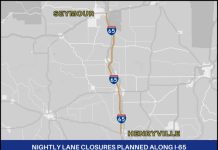President Donald Trump has ordered changes to a federal visa program that permits the hiring of skilled immigrants in an effort to protect American workers and jobs, but two Columbus-based companies said that isn’t the problem.
LHP Engineering Solutions and Cummins Inc. said that they always prioritize hiring United States citizens, but the talent pool they must hire from to ensure they can be competitive is short on qualified Americans and predominantly includes foreign nationals.
Trump signed an executive order Tuesday asking for the U.S. government to propose new rules and changes to the H-1B visa program used by largely U.S. technology companies. The intent, the president said, is to help American workers, whose jobs are threatened by skilled immigrants, and stop abuses of the program.
“We’re going to defend our workers, protect our jobs and finally put Americans first,” Trump said Tuesday.
Possible new rules and changes to the visa program are part of Trump’s “Buy American and Hire American” directive. His order would direct U.S. agencies to propose changes so that H-1B visas are awarded to the most-skilled or highest-paid applicants, and not through the lottery system that is currently used.
H-1B visas are not intended to fill positions on an assembly line, but are meant for jobs requiring specialty skills that can’t be filled by a U.S. worker.
Critics contend the program undercuts U.S. workers by bringing in cheaper, foreign workers and driving down wages.
The top three occupations filled by H-1B visa holders are computer systems analysts, application software developers and computer programmers, according to the U.S. Department of Labor — and those three account for about half of the H-1B certifications.
LHP employees hired through the H-1B visa program are typically mechanical, electrical or computer engineers, company CEO David Glass said.
Filling these types of jobs with Americans is the preference, Glass said.
“But if they’re not available, there’s not much we can do about it,” Glass said.
More than 50 percent of LHP’s 400 employees were hired through the H-1B visa program, Glass said.
When LHP visits universities to recruit engineering students, most are from foreign countries such as India and China, Glass said.
That exemplifies the larger problem of the U.S. having an insufficient pipeline of students learning science, technology, engineering and math (STEM) skills and going into related fields, Glass said.
Cummins’ H-1B hires are typically engineers with a master’s or doctorate degree, company spokesman Jon Mills said.
“We’re going after the best and the brightest,” Mills said.
About 5.5 percent of Cummins’ U.S. workforce, the equivalent of about 1,400 employees, was hired through the H-1B visa program, Mills said.
The visa program is supposed to be capped at 85,000 annually, although more than 100,000 workers are allowed in each year with exemptions for university-related positions.
Glass said LHP sponsors employees for green cards so they can gain U.S. residency and stay longer than the six years an H-1B visa allows.
One of LHP’s co-founders is an example of how companies can benefit from the H-1B visa program. Ryan Hou, LHP chairman and partner, came to the U.S. 32 years ago on a work visa. He hired an attorney to help him through the process of obtaining a green card.
Hou previously said at an immigration policy event the company hosted in March that it’s important for H-1B visa holders to be able to stay in the U.S. long term.
“On a city level, for Columbus, I want them to feel welcome here, settle down here. They need a green card to feel they belong in the Unites States,” he said at the event.
Both LHP and Cummins will keep an eye on the proposed H-1B visa changes. If they largely are to urge the hiring of Americans first that’s fine, Glass said. But if the result is fewer H-1B visas available, that would be a problem, he said.
“We will wait and see,” Cummins spokesman Mills said. “But we must be able to attract and retain the best talent.”
[sc:pullout-title pullout-title=”How they’re used” ][sc:pullout-text-begin]
Columbus-based Cummins Inc. and LHP Engineering Solutions typically hire immigrant workers through the federal H-1B visa program to fill engineering jobs.
LHP typically hires mechanical, electrical and computer engineers. Cummins typically hires engineers with a master’s degree or doctorate.
More than 50 percent of LHP’s 400 employees were hired through the H-1B program. About 5.5 percent of Cummins’ U.S. workforce, roughly 1,400 employees, were hired through the program.
[sc:pullout-text-end]




